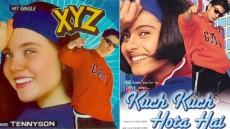The four-year-old Syrian boy with a burnt face found his way to the final debate at Las Vegas in the US between the Republican candidate for President, Donald Trump, and the Democratic Party's Hillary Clinton.
Clinton simulated a lump in her throat describing the child with burns as evidence of indiscriminate Russian bombing of civilians.
The pro- and anti-Russian strand has consistently run through the debates. Clinton has dwelt on Russian perfidy in the West Asian mess while Trump distanced himself from the Cold War rhetoric. According to him, Russian cooperation should be welcome to fight terrorism.
Earlier, Christiane Amanpour of the CNN thrust the very same photograph of the Syrian boy under Russian Foreign Minister Sergei Lavrov's nose during her high profile
interview in Moscow. This, she said menacingly, is a "crime against humanity".
Lavrov contemplated the photograph with some emotion. "This is a tragedy," he said without a change of expression.
Lavrov is too suave a diplomat to get into an argument with reporters. I am sure he knew that the painful picture has gone viral on the social media. A multi-million dollar propaganda machine has been placed at the disposal of the so-called Syrian opposition by an alliance led by the US and which includes Saudi Arabia, Qatar and Turkey.

Propaganda these days will always invite counter-propaganda. It turns out that a video of how the "Syrian boy" photograph was manufactured has gone viral too. I have acquired a clip of this video.
A "fixer" lifts the boy on his shoulder and brings him into a trailer which has been set up as a field studio. The boy looking more weary than in pain is made to sit on a chair.
Media is then ushered in for an extended photo session. A hapless toddler is thus brought into focus as an iconic symbol of Russian brutality.
As the photo session progresses, the "fixers" and the "minders", all wearing white helmets, are laughing -- they are thrilled at the success of their enterprise.
This sleight of hands is the latest I have noticed in my line of duty for decades as a foreign correspondent.
The uses of the media to advance strategic foreign policy ends can be traced, in recent decades to, say, Radio Free Europe to soften up Communist states. This was during
the Cold War.
After the collapse of the Soviet Union, the use of the media in foreign interventions reached new heights because of lightning advances in technology. But let us abide by the Syria story for our purposes.
When I visited the country in August 2011, an imitation of the colour revolutions (Orange "revolution" in Ukraine) was on evidence. In other words, images of slogan-shouting crowds were amplified by the media, creating an illusion of a popular, nationwide insurrection.

It is true there was restiveness in Hama, halfway between Damascus and Aleppo. This was not new. The district has always been a centre for the Muslim Brotherhood. A major uprising in 1982 was so brutally crushed by Hafez al Assad, Bashar al Assad's father, that nearly 10,000 Brotherhood members and sympathisers were killed.
But on this occasion when the restiveness in Hama erupted into a demonstration, US Ambassador Robert Stephen Ford and French Ambassador Eric Chevallier played a role
novel in global diplomacy: they joined the demonstration against the government they were accredited to.
Indeed, the duet made appearances in Homs, on the Lebanese border and Dera, near Jordan. When I asked why Western ambassadors were being allowed to stoke a revolution, one of Bashar al Assad's senior advisers threw up her hands: "This shows how far we have been penetrated."
The ambassadors did not just provide moral support to the opposition by making a personal appearance in the trouble spots; they also provided the insurrection with state of the art communications technology.
According to James Glanz and John Markoff of the New York Times, "The Obama administration is (in 2011) leading global effort to deploy 'shadow' internet and mobile phone systems that dissidents can use to undermine repressive governments that seek to silence them by censoring or shutting down communications networks."

The NYT reporters described "one operation out of a spy novel in a fifth floor shop in L street, Washington, where a group of young entrepreneurs, looking like a garage band, are fitting deceptively innocent-looking hardware into a prototype 'internet in a suitcase'". It was all in preparation of an elaborate "Liberation Technology Movement".
None of this technology has enabled the US and its cohorts to cover themselves with glory in Syria. The so-called "moderate opposition" has been an illusion, a sort of cover for terrorist groups like Al Nusra.
Pushed on to the back foot on this issue, Amanpour screwed up her nose and asked with marked aggression: "You are not suggesting the US is helping terror groups."
Lavrov's non-reply was pithy: "When it comes to the Al Nusra, I am not sure."





